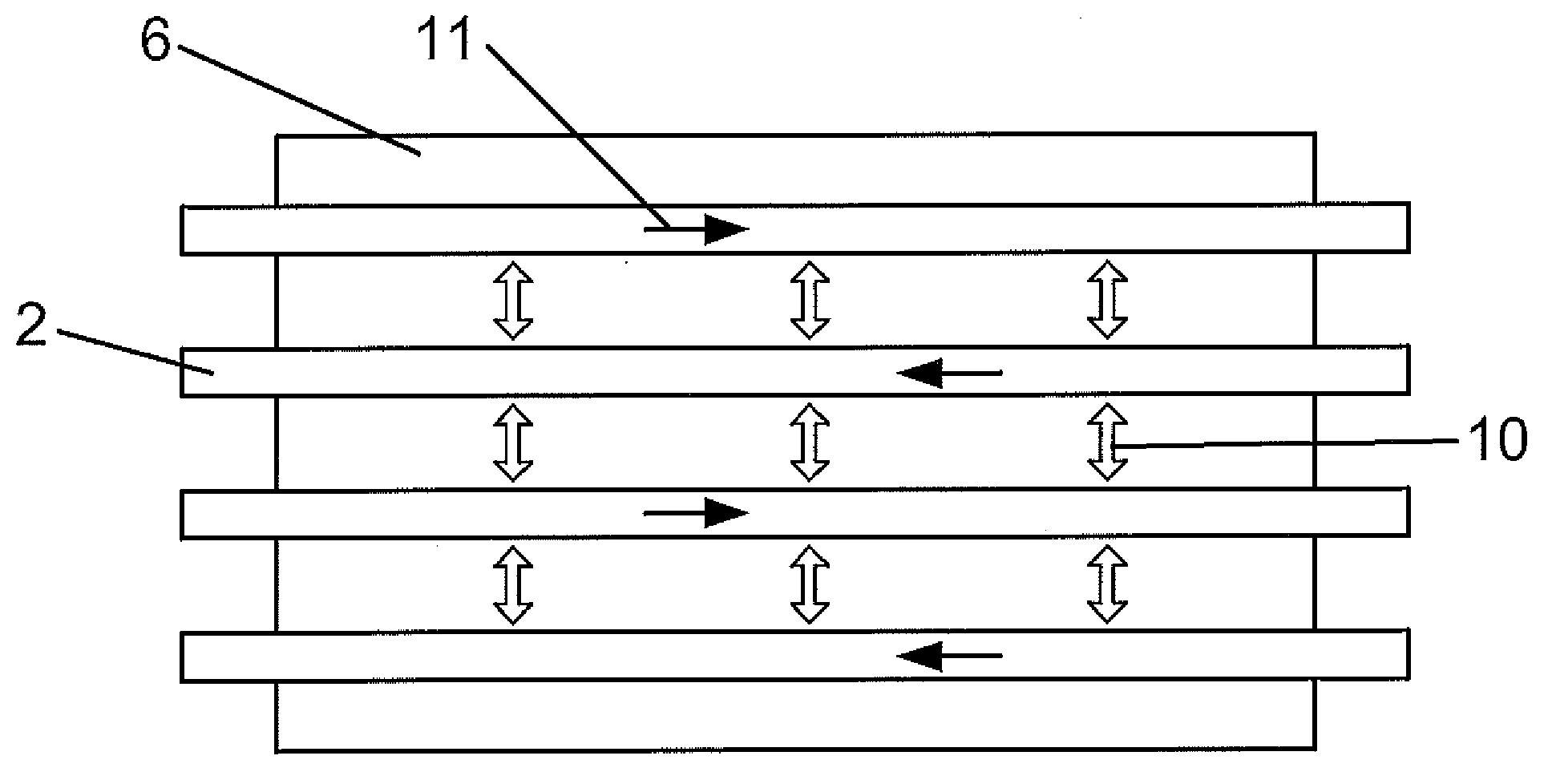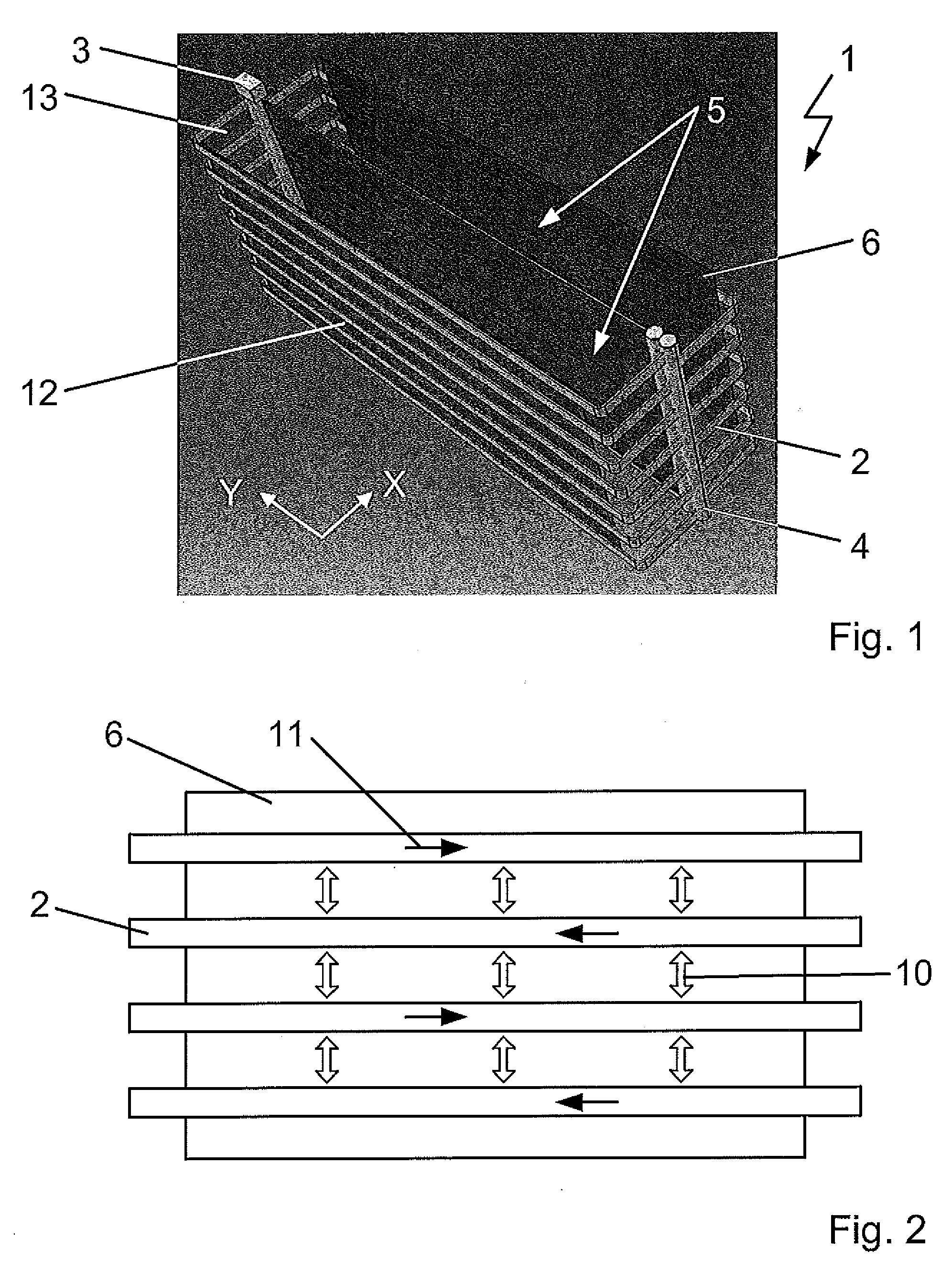Heat exchanger for temperature control of vehicle batteries
a battery and temperature control technology, applied in the direction of lighting and heating apparatus, cell components, cell component details, etc., can solve the problems of battery not being able to provide its maximum output, battery cooling cannot be integrated into the engine cooling system of a hybrid vehicle, and unable to provide unprepared ambient or outside air cooling, etc., to achieve the effect of generating minimum noise and high cooling outpu
- Summary
- Abstract
- Description
- Claims
- Application Information
AI Technical Summary
Benefits of technology
Problems solved by technology
Method used
Image
Examples
Embodiment Construction
[0058]The following detailed description and appended drawings describe and illustrate various exemplary embodiments of the invention. The description and drawings serve to enable one skilled in the art to make and use the invention, and are not intended to limit the scope of the invention in any manner. It is understood that materials other than those described can be used without departing from the scope and spirit of the invention. In respect of the methods disclosed, the steps presented are exemplary in nature, and thus, the order of the steps is not necessary or critical.
[0059]In FIG. 1, the heat exchanger (1) according to the invention with chambers (5) for accommodating battery units is shown, the battery units being cooled by means of the heat exchanger (1). The heat exchanger (1) passed by a heat carrier dissipates the heat that develops during operation of the battery units, that means, during charging and discharging, such ensuring that the battery does not exceed a defin...
PUM
 Login to View More
Login to View More Abstract
Description
Claims
Application Information
 Login to View More
Login to View More - R&D
- Intellectual Property
- Life Sciences
- Materials
- Tech Scout
- Unparalleled Data Quality
- Higher Quality Content
- 60% Fewer Hallucinations
Browse by: Latest US Patents, China's latest patents, Technical Efficacy Thesaurus, Application Domain, Technology Topic, Popular Technical Reports.
© 2025 PatSnap. All rights reserved.Legal|Privacy policy|Modern Slavery Act Transparency Statement|Sitemap|About US| Contact US: help@patsnap.com



